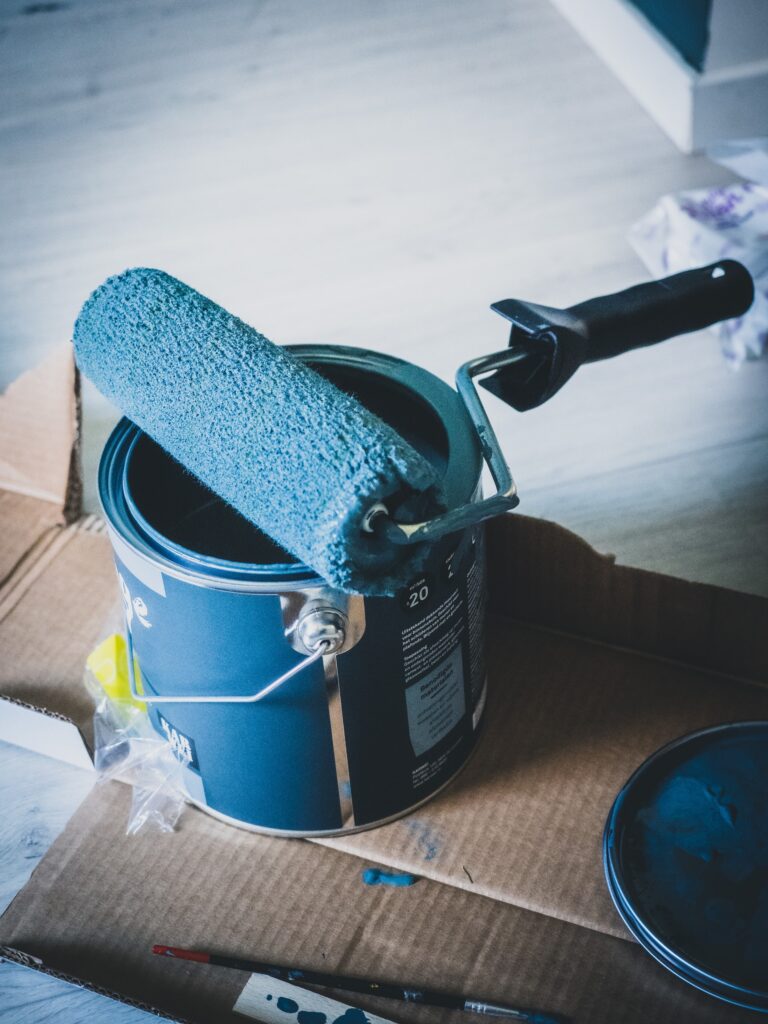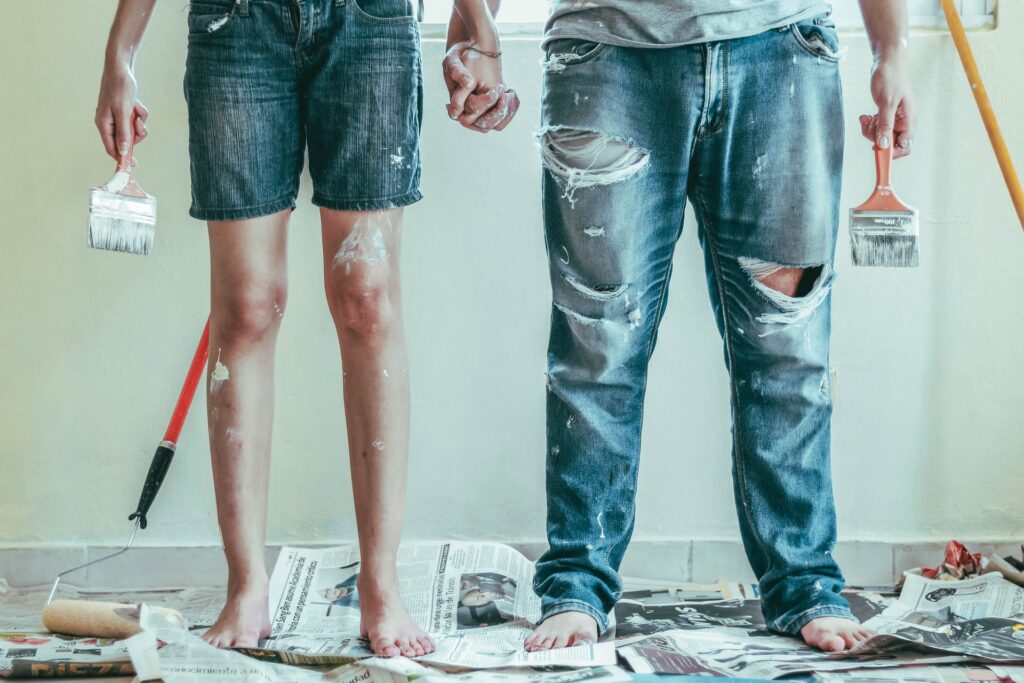Humans have painted things from the time when they first created things. Humans have painted themselves before they created things. To paint is to adorn and beautify but also to protect and preserve. It is deeply embedded in our human consciousness. Cave paintings date back thousands of years. The earliest known sculptures were painted. The interiors of ancient temples and churches were painted. The exteriors of stone buildings were painted.
Paint has the properties of protection and beautification. A thin layer of material, when dissolved in an agent that will evaporate, can protect large surface areas from the effects of weather and, at the same time, enhance the beauty of that surface. Paint, when artfully applied, can fool the eye into thinking a two-dimensional surface has three dimensions. Paint can extend the useful life of all materials. Paint also communicates emotions. We use certain colors to denote certain ideas or emotions. That varies from the culture to culture, but the notion that we associate ideas and emotions with color is universal.
Photo by RhondaK Native Florida Folk Artist on Unsplash
Some church buildings are not painted on the outside but painted on the inside. Some churches are painted inside and outside. All church buildings need some sort of protective layer to preserve the buildings.
Thus, all churches should determine what areas of their buildings are to be painted and when they should be re-painted. As a part of that determination, certain surface materials require different paints. Moreover, the local environment will dictate how frequently a building will need to be painted. Churches in environments with sea air, churches in locations where high winds occur, churches that experience heavy tree debris, leaves and pine needles, may require more frequent painting. All churches should develop a long-term maintenance plan that includes a painting schedule for both exteriors and interiors of all church buildings.
In the wet environment of the Pacific Northwest, moisture is an ever-present danger to paint. Care must be taken to prevent water from intruding behind walls to prevent the paint from lifting and bubbling. Moist salt air is particularly hard on paint when coupled with changes in temperature over time. Moisture inside interior walls can also create mold and mildew.
When churches paint, they must spend more time on preparation than painting. The key to a worthwhile painting job is to carefully prepare the surface before applying any paint. Old paint must be removed, the underlying surface made ready for the new paint, any holes or weak spots removed or filled, and any dry rot or weak sections replaced, before the paint can should be opened and the brushes filled.
Photo by Sven Brandsma on Unsplash
Most exterior and interior paints today are water-based. That makes them easier to use but also makes them more vulnerable to the elements. In some old churches, there may be lead-based paints, particularly in trim and moldings. These paints are hazardous and must be carefully removed by professionals.
Painting metal surfaces requires special preparation and may require special paint. When working with such surfaces, confer with a painting professional to determine what paints will work best.
Changing paint on a surface also requires additional preparation. If the surface has been stained or painted with oil-based paints, moving to water-based paints may require additional preparation. Changing paint tones, moving from dark to light colors may also require more than one coat of paint to provide complete coverage.
Paint can be applied with a brush or roller or spray equipment. Each modality has advantages and disadvantages. Broad coverage is easiest with spray equipment. Detailed work generally requires brushes. Be sure to discuss these expectations with any vendor before signing a contract.
Photo by Roselyn Tirado on Unsplash
How often to paint depends on local circumstances. Exterior paint can last twenty years, depending on the quality of the application of paint and the quality of the paint used. In many cases, the paint will begin to fade, or chalk, or blister or lift well before the twenty-year mark. Churches should engage in an annual inspection of all painted surfaces to determine when the next painting cycle will be needed.
Paint is a critical element in the preservation of buildings. As importantly, maintaining a quality paint job demonstrates care and good stewardship of our possessions. Having an attractive, well-maintained building is a sign of an attractive and well-maintained congregation.




